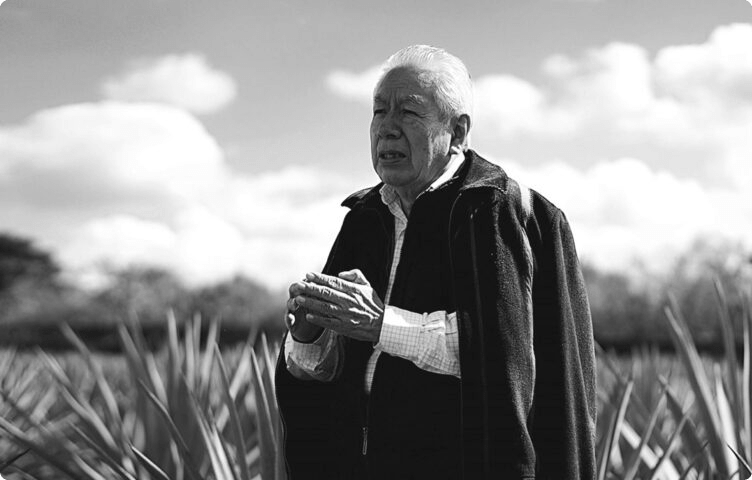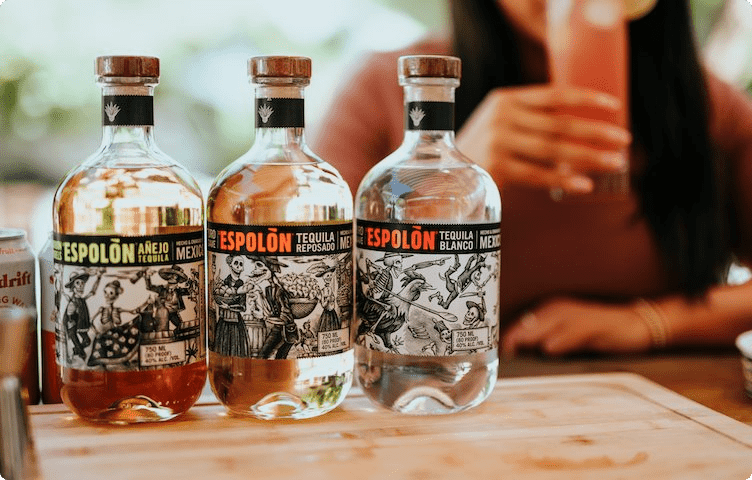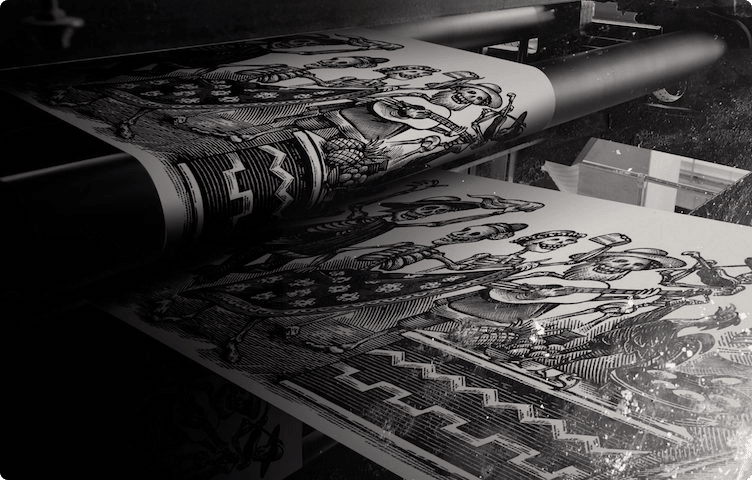Tequila is one of the oldest alcoholic drinks in North America, but the Espolon brand appeared on the world market not so long ago, in 1998. Connoisseurs of unusual alcohol are attracted by the bright taste of the product, which combines sweetness, sourness and salt. Also of interest are the labels on the bottles, decorated with skeletons - a tribute to Mexican culture with its special attitude to the other world.
Brand history
Espolon tequila is created from 100% blue agave distillate. At the origins of the drink is a small distillery founded at the end of the 19th century by a local rich man, Don Celso Placencia. The company was located in the Mexican state of Jalisco, which is famous for its abundance of agave.
For two generations, the Plasencia family has been producing white tequila that matches traditional Mexican tastes. Legend claims that it was Don Celso who came up with the idea to age the raw materials in oak barrels. This is how a variety of “rested” drink called Reposado appeared.
Later, Celso’s grandson, Raul Plasencia, created a modern company on the basis of his grandfather’s enterprise, called the San Nicolas Distillery. Combining old family experience and the latest technology, Raul began producing Espolon tequila. The author of the recipe is considered to be master distiller Cirilo Oroleza.

The name of the drink is translated from Spanish as “Cock Spur.” In Mexican culture, the rooster is considered a symbol of the country's national pride. The design of the labels is made in the style of engravings by artist José Guadalupe Posada, who often depicted skulls and skeletons. Posada's creativity reflects the traditional values of Mexico - love of freedom, cheerfulness, respect for the heritage of ancestors.

After the opening of the new plant, the family business did not develop very successfully, so in 2008 the company was sold to the American branch of Gruppo Campari. There were no problems with the quality of the drinks, and the process of their production still remains in the hands of the Plasencia family.
Main characteristics
Espolon tequila uses Weber blue agave, which grows in the “golden triangle” - the highlands of Los Altos in the state of Jalisco. The plantations are located 2000 m above sea level. The altitude stresses the plants, causing their sap to be much sweeter than that of agave from other regions.

The raw materials are distilled in stainless steel vats. Water for the distillery is taken from a natural source rich in minerals. During the fermentation of yeast, classical music is turned on - it is believed that yeast fungi are activated by musical vibrations.
Tequila is double distilled through column and pot. This process gives the drink a uniform, balanced taste. At the end, the product is bottled in branded bottles. It has a strength of 38-40%. At the same time, the taste is unusually soft, and many bright notes are felt in it:
- agave;
- Exotic fruits;
- lemon zest;
- vanilla;
- spices.
The aftertaste contains hints of pepper, agave and lime.
An important characteristic is the aroma, which gives the drink uniqueness. The smell is very fresh, with notes of citrus, honey and pumpkin. In the background there is the aroma of cut grass and almonds.
Espolon is drunk neat with ice. It is an ingredient in many tequila-based cocktails, including the Paloma and Margarita.
Tequila is traditionally drunk from special shots called "shots" or "copitos". These shots are usually shaped like small columns that help highlight the purity and intensity of the tequila's flavor. The volume of shots varies, but they usually hold between 30 ml and 50 ml of drink.
It is important to remember that tequila is consumed slowly and in moderation to enjoy its special flavor notes and avoid getting too drunk. The right choice of glassware and serving rituals add unique flavor and pleasure to this Mexican drink.
Types of Espolon
All drinks produced by the San Nicolas distillery are based on blue agave distillate . As has been the custom since the time of Don Celso, the pulp of the plant is first kept in ovens, and the distillation process itself lasts longer than in the production of other alcoholic beverages. As a result, the tequila acquires softness and a pronounced smoky aftertaste of baked agave. Now the distillery produces four Espolon varieties, each of which differs in flavor shades and bottle design.
Blanco
This drink is considered the basis for the rest of the brand's products . The transparent color with a platinum tint corresponds to the name - “blanco” translatesas "white". The variety has a sweetish taste, which combines notes of agave, tropical fruits, pepper and lime zest. The drink leaves a soft aftertaste with a pronounced aroma of agave, pepper, vanilla and roasted pineapple.
The bottle label depicts a battle involving skeletons in period costumes. One of them is riding the rooster Ramona, the brand's mascot.
Blanco tequila is recommended for drinking neat and making cocktails. The most popular Paloma mix is made with two parts Espolon blanco, one part lime juice, grapefruit soda and a pinch of sea salt.

Reposado
To prepare this variety, Blanco tequila is aged in lightly charred American oak barrels . This treatment adds complexity to the flavor, giving it rich notes of agave, sweet fruit, vanilla and cinnamon. The drink leaves a long spicy aftertaste. Reposado has a rich golden color.
The label depicts skeletons peacefully trading in a market. The famous rooster Ramon sells grain.
Reposado tequila is recommended to be drunk neat. If you want to dilute the taste slightly, you can add lime juice, agave syrup and lightly salt. Various cocktails are also prepared based on this variety, including the Mexican Mule. The drink contains Reposado tequila, lime juice and ginger beer.
Anejo
The name of this variety means “seasoned” . It is made from Blanco tequila, aging for ten months in new barrels. The raw materials are then poured into heavily charred bourbon barrels and left to steep for another two months. The drink acquires a unique taste - a mixture of roasted agave, caramel, dried fruit and chocolate. The aroma reveals notes of wood, toffee and dried fruit.
"Anejo" is included in many cocktails, including:
- "Old-fashioned";
- "Manhattan";
- "Savory Margarita";
- "Smash";
- "Pina de Fuego"
The Añejo label depicts a street party, in which the same famous skeletons participate. Rooster Ramon, standing on a barrel, raises a toast.
Anejo X
This is a limited edition , the raw materials for which were aged for six years in American oak barrels. The drink has a rich golden color and a floral aroma with hints of smoke, roasted almonds, pineapple, vanilla and wood. The rich taste combines notes of agave, nutmeg, white pepper, cocoa and fruit. The aftertaste reveals cherry, chocolate, tobacco and honey.
The most intriguing touch in the portrait of Anejo X tequila is the design of the bottle. It is made of black glass, and the label depicts the celebration of the traditional Mexican Day of the Dead. The black glass container is a tribute to the barro negro style of ceramics found in the state of Oaxaca.

How to distinguish fake Espolon tequila from the original
The main brand mark by which original Espolon drinks are identified is the labels on the bottles. Each of them is a complex plot drawing based on Posad’s work. The skeleton named Guadalupe in the center of the composition is a symbolic image of the artist himself.
On the bottle of “Blanco” Guadelupe rides on a fighting rooster, in the series “Reposado” he flirts with the skeleton girl Rosarita. The "Anejo" label depicts Guadalupe and Rosarita dancing in front of a tequila barrel.
The high quality and complexity of the designs serve as a guarantee against counterfeiting.
















































/https%3A%2F%2Fcomplexbar.com%2Fimages%2Fblog%2F244%2FESPOLON_752x480.jpeg)
/https%3A%2F%2Fcomplexbar.com%2Fimages%2Fblog%2F246%2Fsirop_scale_2400.jpeg)
/https%3A%2F%2Fcomplexbar.com%2Fimages%2Fblog%2F246%2Fkofe-vostochniy.jpg)
/https%3A%2F%2Fcomplexbar.com%2Fimages%2Fblog%2F245%2Fpexels-jason-villanueva-851555.jpg)
/https%3A%2F%2Fcomplexbar.com%2Fimages%2Fblog%2F246%2F2024-04-09_17.22.54.jpg)
/https%3A%2F%2Fcomplexbar.com%2Fimages%2Fblog%2F246%2F2024-04-09_17.22.47.jpg)
/https%3A%2F%2Fcomplexbar.com%2Fimages%2Fblog%2F246%2FCODE_anons_foamydrops_752%D1%85480_eng.jpg)
/https%3A%2F%2Fcomplexbar.com%2Fimages%2Fblog%2F246%2FAlina_752%D1%85480_eng.jpg)
/https%3A%2F%2Fcomplexbar.com%2Fimages%2Fblog%2F246%2F2024-04-09_17.23.22.jpg)
/https%3A%2F%2Fcomplexbar.com%2Fimages%2Fblog%2F246%2F2024-04-09_17.23.28.jpg)
/https%3A%2F%2Fcomplexbar.com%2Fimages%2Fblog%2F246%2F2024-04-09_17.23.35.jpg)
/https%3A%2F%2Fcomplexbar.com%2Fimages%2Fblog%2F246%2Fdrinksome_752%D1%85480_eng.jpg)
/https%3A%2F%2Fcomplexbar.com%2Fimages%2Fblog%2F246%2Fnude_752%D1%85480_eng.jpg)
/https%3A%2F%2Fcomplexbar.com%2Fimages%2Fblog%2F246%2F752%D1%85480_eng__1_.jpg)
/https%3A%2F%2Fcomplexbar.com%2Fimages%2Fblog%2F246%2F752%D1%85480_eng.jpg)
/https%3A%2F%2Fcomplexbar.com%2Fimages%2Fblog%2F246%2FStudioRaw_752%D1%85480_eng.jpg)
/https%3A%2F%2Fcomplexbar.com%2Fimages%2Fblog%2F246%2FDoppio_tea_752%D1%85480_eng.jpg)
/https%3A%2F%2Fcomplexbar.com%2Fimages%2Fblog%2F246%2FTognana_Stars_Stripes_752%D1%85480_eng.jpg)
/https%3A%2F%2Fcomplexbar.com%2Fimages%2Fblog%2F246%2FRona_752%D1%85480_eng.jpg)
/https%3A%2F%2Fcomplexbar.com%2Fimages%2Fblog%2F246%2FDoppio_vending_752%D1%85480_eng.jpg)
/https%3A%2F%2Fcomplexbar.com%2Fimages%2Fblog%2F246%2FEssence_sukhie_smesi_752%D1%85480_eng.jpg)
/https%3A%2F%2Fcomplexbar.com%2Fimages%2Fblog%2F246%2FODK_sukhie_smesi752%D1%85480_eng.jpg)
/https%3A%2F%2Fcomplexbar.com%2Fimages%2Fblog%2F246%2Funiforma-barmena.jpg)
/https%3A%2F%2Fcomplexbar.com%2Fimages%2Fblog%2F246%2Fkak-nanyat-barmena.jpg)
/https%3A%2F%2Fcomplexbar.com%2Fimages%2Fblog%2F246%2Fsirop_scale_2400.jpeg)
/https%3A%2F%2Fcomplexbar.com%2Fimages%2Fblog%2F246%2FPeugeot_Anons_Paris_U%27Select_Line_Daman_752%D1%85480_eng.jpg)
/https%3A%2F%2Fcomplexbar.com%2Fimages%2Fblog%2F246%2Fkofe-vostochniy.jpg)
/https%3A%2F%2Fcomplexbar.com%2Fimages%2Fblog%2F246%2FMadler.jpg)
/https%3A%2F%2Fcomplexbar.com%2Fimages%2Fblog%2F246%2Fprofbartender_glavn.jpeg)